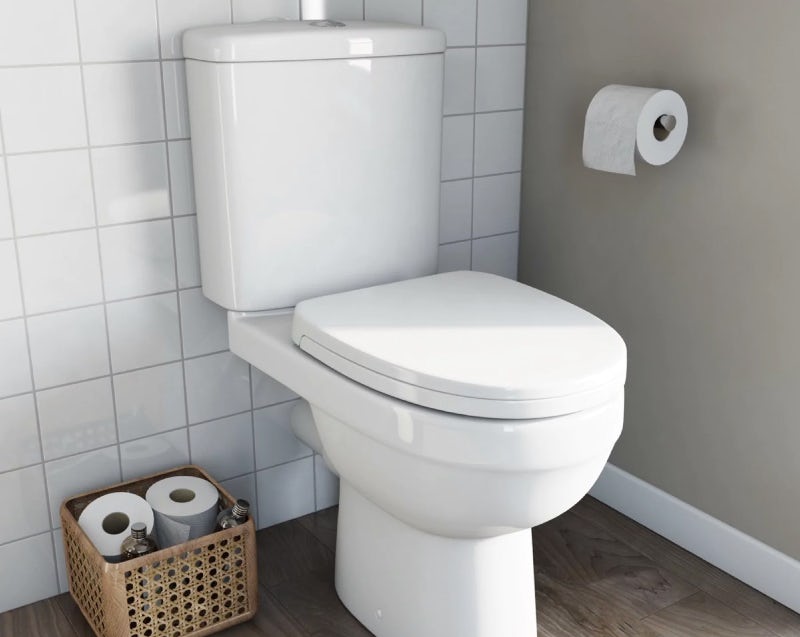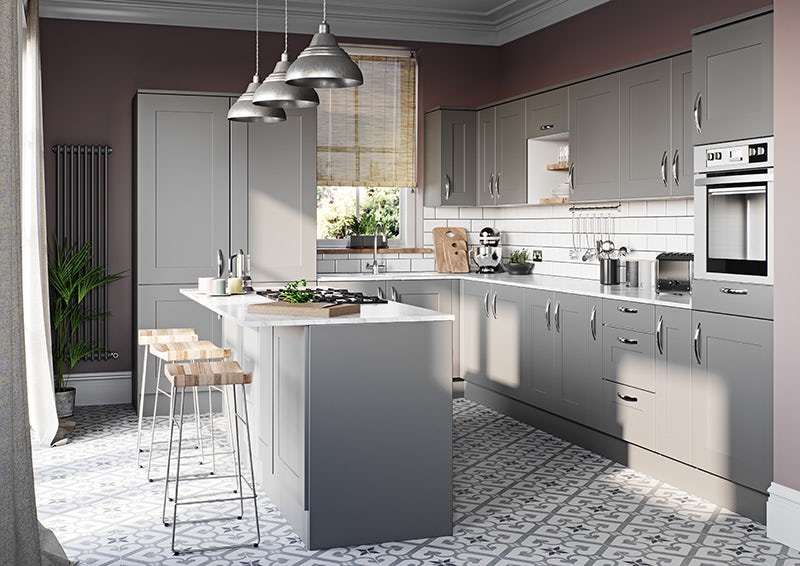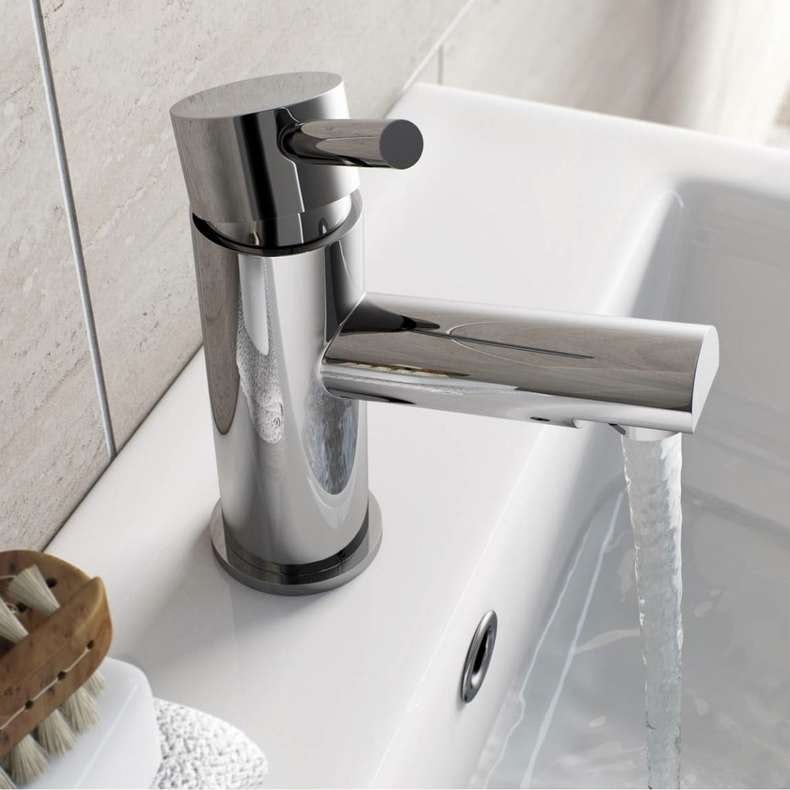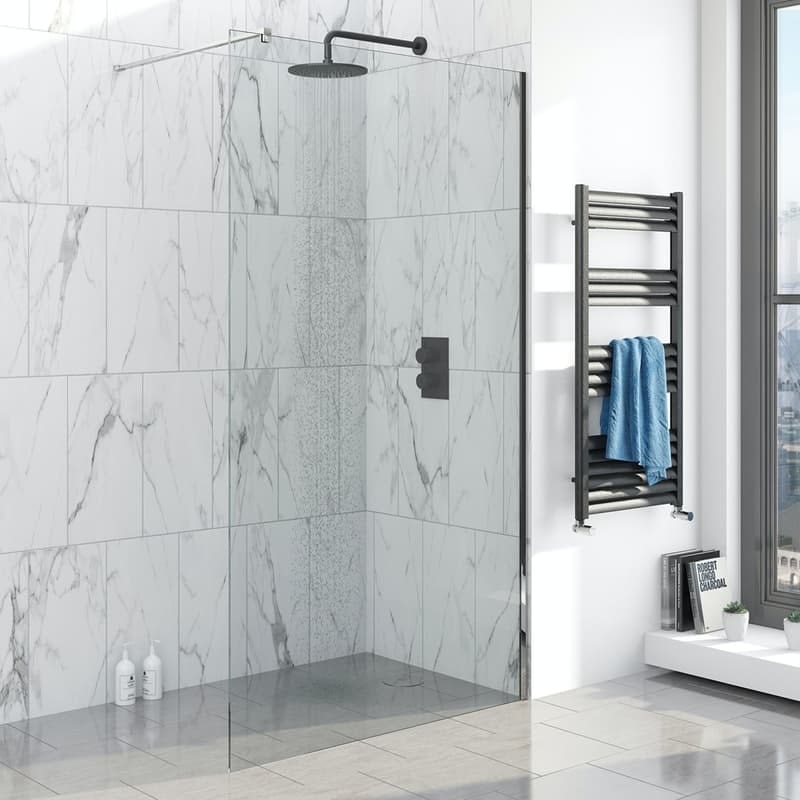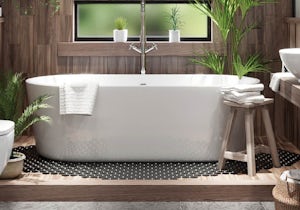With water shortages a hot topic in recent weeks, we discover how you can do your bit by reusing waste water from your bathroom and kitchen.
The term “greywater” doesn’t sound particularly appealing but then you’re not going to be drinking this type of water. What you probably will be doing though is watering your flowers and irrigating your lawn. Oh, and you’ll certainly be using it to flush the toilet. It can even be used in the washing machine.
Re-using your bath water, the water that’s run off in the shower and sud-filled water from your sink, is a great way to be sustainable and, at the same time, save yourself money by reducing your water bill (provided you have a water meter, that is). Whilst we’ve already looked at using rainwater around your garden and home, using greywater is another eco-friendly initiative you can consider.
Don't throw the baby out with the bathwater! At nearly 200 litres per bath, there's a lot of water that can be reused
Businesses—mainly hotels, university accommodation, restaurants and other commercial ventures—have been using greywater to save money for years. To the extent that there is actually a British Standard code of practice for how you should use it and for what. The code states that, as long as it’s treated properly (which we’ll come on to later in this article), then it’s perfectly fine to use greywater for flushing the toilet, washing clothes, etc.
What you can’t do is treat it like potable water. And that means you can’t drink it. Nor should you use it for bathing or washing dishes. Or even washing the car (the spray makes the water airborne, meaning it’s easier to breathe in particles and pollutants). The reason being that you don’t want to risk it being contaminated and making you and your family or friends ill.
If the thought of saving money on your water bill doesn’t incentivise you then consider this—the average household’s water waste in the UK is made up of around 80 percent greywater. Around one third of the water we use up in our homes is used to flush the loo. And, once water is used for this it becomes, what is termed, “blackwater”—something that’s just too harmful to reuse. Water environmentalists believe that recycling greywater can actually save us around 70 litres of potable water per day in the typical UK household.
That’s a lot of water we could save, especially when you consider there are currently around 28.3M households in the UK.
How to recycle greywater
If you don’t plan on treating your greywater (i.e. adding filters and chemicals to take out the bacteria), that means you’ll be using it for your garden or lawn. You must use it within 24 hours (preferably less) after collecting it. Otherwise, the particles in the water will multiply and it will start to smell. And that’s going to make you want to avoid your garden—especially if the water has been left for up to several days.
A good way to make sure you use up the water quickly is to fit a valve to your external waste pipe. This can then instantly direct the water to a water butt, allowing you to lift out the water and use it for irrigating the lawn or watering flowers. Note though, that it’s not a good idea to use greywater to water vegetables. That’s because these will be eaten by humans at some stage and you don’t want them contaminated by particles in unfiltered water.
Neither should you use greywater which contains bleach, dishwasher salt and disinfectants, as these can damage plants—as well as the underlying soil structure—if used continually on a particular piece of the garden. The soaps and shampoos you find in showers or baths are fine to use on non-edible plants in the garden since these are mild and tend to be well diluted. If you’re using washing machine water then use a low-sodium detergent.
Using greywater for toilet flushing
There are a few ways to access greywater for toilet flushing. One is to remove the U-bend under a sink and let the wastewater fall into a bucket. You can then take the bucket of water and pour it into the toilet cistern.
Or, you can invest in a greywater pump unit to take the water away from, for example, your washing machine, bath, shower and kitchen sink. It can then sit in a tank where it’s chemically treated by adding chlorine. It’s then sent to wherever it’s needed e.g. washing machine or the toilet cistern. It’s also possible to treat greywater with microfiltration systems and membranes.
Another low-cost alternative would be to store used bath and shower water in a small tank and then use it solely for toilet flushing (i.e., not laundry or garden irrigation too).
Why not use greywater to flush your toilet?
What to use grey water for
Just to recap, here are the main ways that grey water can be used by the average household—both inside the home and outside in the garden:
Flushing the toilet
Once the greywater has been filtered and treated with chemicals so that any bacteria and other pathogens are destroyed, it can then be pumped into a header tank and back to the toilet.
Laundry
The grey water for washing clothes also needs to be chemically treated before it can be re-used. This can be achieved by redirecting the water to the washing machine via a pipe.
Watering flowers
Using the grey water in an irrigation system, which shoots water on specific areas where it’s needed, is a much better idea than the scatter gun approach of a sprinkler system. That way even less grey water is used. Unlike with the toilet and washing machine, the greywater for plants doesn’t need to be chemically treated.
Benefits of reusing grey water
When we recycle our water, we don’t take as much potable (treated and drinkable) water out of the mains supply. And that’s what, as a country, we definitely need to do more of. England's Environment Agency has already warned that water scarcity is an ongoing problem—even here in the UK—as a result of climate change. Water is evaporating, while plants and crops need more to cope with the drought conditions. In fact, the term the government agency used to describe the water situation as a result of global warming, was a "ticking time bomb".
Earlier this year, in July, the Agency said it was imperative that householders and commercial ventures in England—especially in London and the South East—change the way they use water, in order to make sure there’s enough to go around for everyone. As a result, people have been ordered to reduce their daily household water use to 110 litres (from 140 litres).
Another benefit of using greywater is that fewer pollutants and other chemicals are flowing into our rivers, meaning they’re healthier for wildlife, as well as flora and fauna growing on their banks.
Water can be recycled throughout your kitchen
Disadvantages of using greywater
To store greywater, there is, of course, the problem of holding on to contaminated water. Unless, that is, you are prepared to use filters and chemicals or even ultraviolet light. These systems need energy to work. Having said that it’s only about £20 a year’s worth, so it’s not going to make a huge indent on your carbon footprint.
Cost of collecting greywater for domestic use
The cost of installing a greywater system in the first place isn’t exactly cheap. Aquality’s entire house greywater system comes in at around £3,000, for instance. And that’s not counting the installation costs of around £1,000. Then there is the annual maintenance costs—to clean the high-tech membrane filters—which will probably cost around £150 to £200.
Kent-based Aquaco have produced water recycling systems for Google and Amazon’s headquarters in London, and the HQ of the National Bank of Kuwait in the Middle East. But they also manufacture a domestic water recycling system. The company’s Home Greywater System ranges from £2,500 for a below-ground tank or £2,700 for above-ground. The system uses greywater from basins, showers and baths then re-uses it for toilet flushing. Their more advanced Home Combined unit can also provide greywater for laundry and garden irrigation purposes. This ranges from around £4,500 to £7,300, depending on the size of tank ordered.
Greywater systems around the world
For those who don’t want to fork out that much money initially, the good news is that there are more advanced, and cheaper, systems currently being developed in Europe and America, solely for domestic use. Up till now, most greywater systems have been exclusively designed for commercial ventures, such as those in the leisure industry, for whom recycling vast amounts of water make perfect sense financially.
In Germany, most domestic greywater systems don’t use chemicals and are mostly used for toilet flushing. They must, however, be registered with the country’s health office so that inspectors there can check there is no cross-contamination with the potable water system. A secondary safety measure is that all greywater pipes must be clearly marked. Hygienic regulations for water there are similar to those in the UK, i.e. they are in line with EU Guidelines for bathing water.
Just as here in the UK, new build property developers are mandated to install energy-saving components, such as solar panels, in the US certain states are insisting on greywater recycling systems. Tucson in Arizona is one of them. A pilot programme 3 years ago saw Lennar Homes fit greywater-filtration systems, costing US$4,500 (£3,600) in some homes in two new subdivisions. Used shower and bath water was redeployed for toilet flushing. The result was indoor water use was reduced by 25 percent.
The filtration tanks in the Tucson project, measuring 2ft x 2ft, were put in the garages of the new homes. One homeowner said the greywater for flushing didn’t smell—or look—any different to her potable water. And, because it’s not used for irrigation, she can use whatever soaps and detergents she likes.
One city in Colorado—Castle Rock—gives builders a 33 percent reduction on the cost of hooking up to the city’s water supply if they can guarantee indoor water won’t go above a certain figure. In other words, they are incentivised to install greywater systems in new homes.
From tap to waste in a matter of seconds. The amount of greywater that can be recycled in the home is huge
What’s happening with greywater in the UK?
More than a decade ago, Severn Trent Water installed the ReAqua system into 10 new build homes. It received positive feedback from homeowners and the water provider hoped to widen the measure to other homes, specifically those of its employees. Today, the same water authority are offering homeowners grants of £5,000 to £20,000 for֫—amongst other green measures—community projects which involve greywater recycling and rainwater harvesting.
Some environmentalists believe the ideal scenario would be if water companies themselves were prepared to pay for the installation of grey water systems across thousands of households in their region. That way, the system would pay for itself in terms of less potable water being consumed.
Right now, the UK Government’s Department for Environment, Food and Rural Affairs (DEFRA) offers grants to businesses to help with rainwater harvesting and greywater. This includes funding the cost of guttering, pipes and tanks.
And yet, believing it is not always financially viable, there is no funding available for domestic use. That’s because the money a householder saves depends on many factors. This ranges from the number of people in the house, to how much per litre of water you are being charged. What a greywater system will do though, is futureproof you against any rising water charges as this becomes an increasingly scarce commodity over time. No hosepipe ban for you then!
Water from your shower can be used elsewhere throughout your home and garden
Thinking about getting a greywater system?
If your environmental conscience is niggling away at you and you are considering installing a greywater system, then here are a few points to note:
- Consider the ongoing costs of installing your greywater system. It’s not just about the installation. You’ll need the system filters checked annually, and there will probably be other maintenance issues further down the line.
- Always get a qualified greywater system plumber in to fit the system. In fact, the manufacturer’s recommended installer will be the person you want. Pipes must be labelled correctly to avoid cross-contamination.
- It’s cheaper to install a greywater system if you’re building your own home than retrofitting an entirely new filtration unit. In the case of the latter, it will probably involve a little renovation work. In which case, if you want one in your current home, then wait until you plan on doing a big bathroom renovation first.
Organisations to turn to for help and advice
- Centre for Alternative Technology (CAT)—an educational charity with advice on reusing rainwater and grey water
- Royal Horticultural Society (RHA)—suggestions on how to use greywater safely in your garden
- Environment Agency—A Guide to using Greywater in the Home
Find out more about and shop eco bathrooms
Here at Victoria Plum, we're dedicated to helping you save water and energy in your home. You'll find plenty of handy advice, including our own environmentally-friendly bathroom ideas, plus ways to preserve heat across your property (great for those chilly winter months!). Head to our eco bathrooms hub for more inspiration.
To help you choose water and energy-saving products for your home, we've created a dedicated eco bathrooms range. You can browse this now by clicking on the image below.


